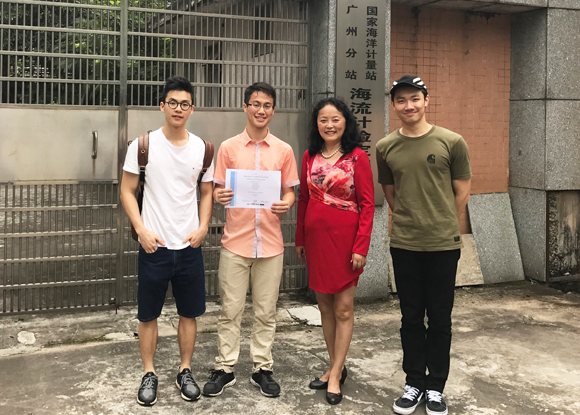SYSU students gain good results in 2017 Mathematical Contest in Modeling
Source: School of Mathematics
Written by: Huang Danjie
Edited by: Wang Dongmei
Recently, the results of Mathematical Contest In Modeling (MCM) and Interdisciplinary Contest In Modeling (ICM) have been announced. The team — comprised of SYSU seniors Hu Siwei, Tan Yixun from School of Engineering, and Xie Zihao from School of Data and Computer Science — was awarded the designation of Finalist. Until now, Sun Yat-sen University has won the Finalist 8 times in a row since 2010.

Finalist Winner (left to right: Tan Yixun, Hu Siwei, Bao Yun (Faculty Advisor), Xie Zihao)
The 2017 MCM/ICM attracted 16,928 teams with nearly 50,000 competitors from all over the world, including Harvard University, University of California at Berkeley, University of Oxford, University of Cambridge, Peking University, Tsinghua University and other well-known universities. 1338 students of 450 teams from 29 schools of Sun Yat-sen University took part in the contest. In addition to the above awards, they won 56 Meritorious Winners and 173 Honorable Mentions, the proportion of awards reached 51%. The number of participants, prizes and beneficiaries have achieved the highest level.
In the paper of Finalist Winner, the three SYSU contestants used the multi-objective fuzzy evaluation method to design a multi-dam joint system of Zambezi River in Africa, and designed a linkage control scheme of the system during the flood season, which helps the drought period reduce by 30.67% compared to the existing scheme. "The mathematical modeling should focus on modeling. The simpler and easier to understand, the more successful the model," Hu Siwei said.
MCM/ICM is a world-wide contest organized by COMAP, SIAM and NSA with over 30 years of history. It is regarded as the origin of math modeling contest and the most influential one. Contestants are required to offer a solution paper to one of the problems within 99 hours. The paper should involve the analysis to problem, feasibility, robustness and effect of the model with concise writing.
